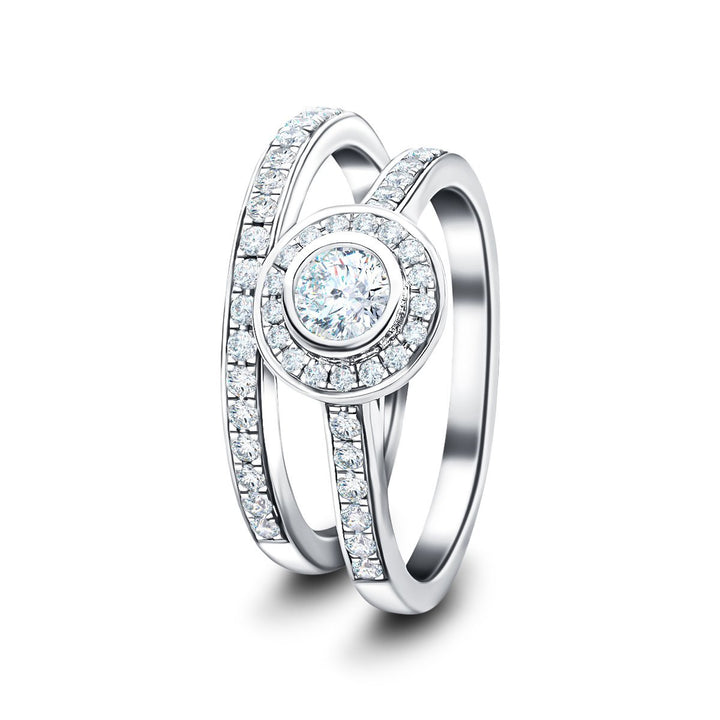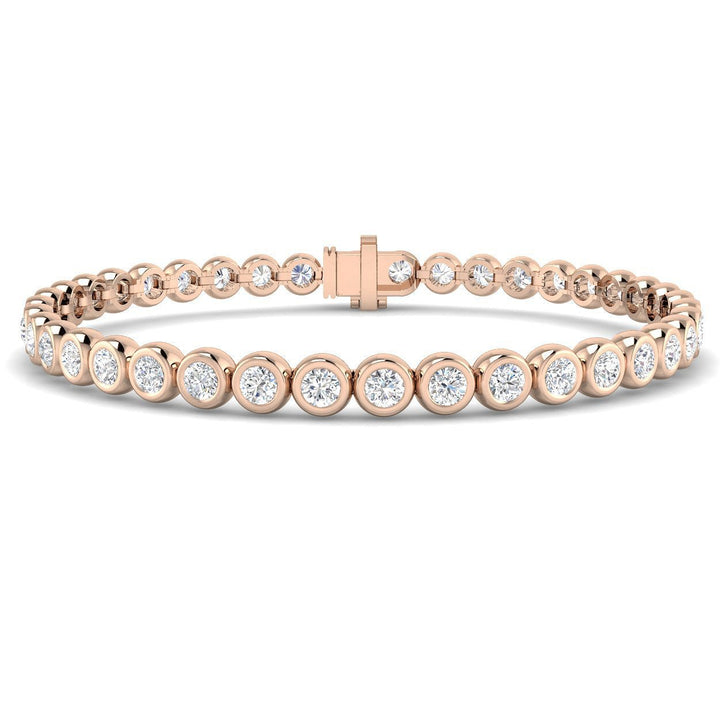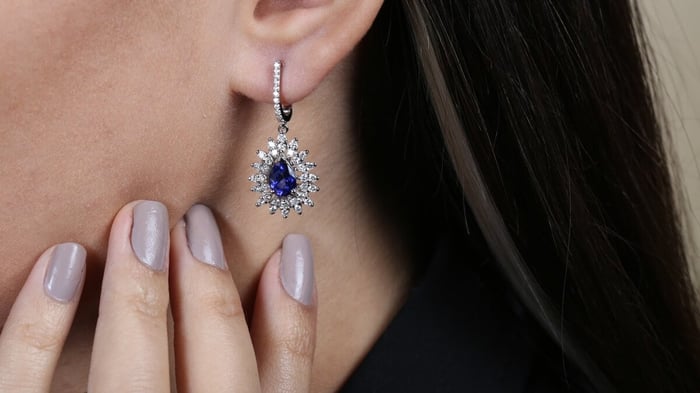Your Jewellery Dictionary
When you start shopping for fine jewellery, especially with diamonds and other precious stones, you are going to see many words that mean little or nothing to you. Just as with almost any other business, jewellers have a wide range of industry-specific words and phrases. As a buyer, it is helpful to know and understand what these terms mean. Knowing them will help you to be an informed consumer, able to make good choices to get the right pieces of jewellery at the right quality and cost. The following jewellery dictionary will get you on a journey to the necessary expertise to help you avoid many of the pitfalls that can occur when buying a product you do not know enough about.
A Glossary Of Jewellery Industry Words And Phrases
Alloy: A mixture of metals often used to create a more durable or cheaper metal.
Alexandrite: A rare gemstone that changes colour depending on the light, appearing green in daylight and red in artificial light.
Amethyst: A type of purple quartz often used in jewellery.
Aquamarine: A light blue or greenish-blue gemstone often used in jewellery.
Art Deco: A style of jewellery popular in the 1920s and 1930s characterised by geometric shapes and bold lines.
Asscher cut: A square diamond with step-cut facets and cropped corners, similar to an emerald cut.
Bail: The loop or hook on a pendant or charm that allows it to be worn on a chain.
Bezel setting: A type of setting in which a gemstone is held in place by a thin metal rim. The gemstone is entirely encircled by the metal, providing a secure hold.
Birthstone: A gemstone associated with a person's birth month.
Carat: A unit of weight used to measure gemstones and pearls. The larger the diamond, the higher the carat weight. One carat is equal to 200 milligrams.
Channel setting: A type of setting in which gemstones are held in place by a channel of metal. The gemstones are set next to each other in a straight line, with no metal separating them.
Clarity: The measure of inclusions or blemishes in a gemstone. A gemstone with high clarity will have few or no visible inclusions.
Clasp: The mechanism used to secure a necklace or bracelet. Clasps can be lobster claw, spring ring, or toggle, among others.
Collet: The tiny metal collar holding a gemstone in place in a setting.
Colour: The hue of a diamond, rated on a scale from D (colourless) to Z (noticeable yellow). Diamonds with a lower colour rating will have a more yellow or brownish tint.
Cushion cut: A diamond with a soft, pillow-like shape and rounded corners.
Cut: The shape and style of a diamond, such as round, princess, or pear. The cut of a diamond also refers to how well the diamond's facets are aligned and how much light the diamond reflects.
Sapphire & Diamond Tennis Bracelet 2.25ct in 18k White Gold

£1,997.00
£3,557.00
Handcrafted elegance overflows in this stylish sapphire and diamond tennis bracelet. 1.05 carats of sparkling and ethically sourced diamonds are set alongside bright and gleaming sapphires in a rub-over bezel setting on brilliant 18k white gold, which is sure to… read more
Diamond: A hard, sparkling gemstone often used in engagement rings. Diamonds are rated on a scale from D (colourless) to Z (light yellow).
Emerald: A green gemstone often used in jewellery.
Emerald cut: A rectangular diamond with step-cut facets and cropped corners.
Filigree: A type of decorative metalwork featuring intricate, delicate patterns. Filigree is often used in antique or vintage jewellery.
Fluorescence: The glow a diamond gives off when exposed to ultraviolet light. Fluorescence can sometimes make a diamond appear hazy or milky.
Four Cs: The four Cs are a system used to grade the quality of diamonds. The four Cs are carat, cut, clarity, and colour.
Garnet: A group of gemstones that come in various colours, including red, orange, and yellow.
Gold: A precious metal often used in jewellery. Gold is typically measured in karats, with 24 karats being pure gold.
Heart cut: A diamond with a heart-shaped outline.
Halo setting: A type of setting in which a ring of smaller gemstones surrounds a larger centre gemstone. The halo of smaller gemstones creates a sparkling, decorative effect.
Illusion setting: A setting designed to make a gemstone appear larger than it is. It is achieved by using thin metal prongs or a thin metal frame to hold the gemstone in place, creating the illusion of a larger stone.
Inlay: The process of setting a gemstone or other material into a piece of jewellery. Inlaid jewellery features gemstones or other materials set into the surface of the metal.
Princess Diamond Illusion Pendant Necklace 0.25ct G/SI 18k White Gold

£680.00
£987.00
Entrancing 18k white gold is artfully used to fantastic effect by our UK artisans on this beautiful princess-cut diamond illusion pendant necklace. A quarter of a carat of luxurious princess cut G/SI quality diamonds are arrayed for maximum impact and… read more
Karat: A unit of measure for the purity of gold, with 24 karats being pure gold. Gold jewellery is often marked with its karat weight, such as 14k or 18k.
Marquise: A diamond or other gemstone cut into an oval shape with pointed ends. The marquise cut is often used in engagement rings.
Onyx: A black or dark-coloured gemstone often used in jewellery. Onyx is a type of quartz with a smooth, polished surface.
Opal: A gemstone known for its iridescent, rainbow-like colours.
Oval cut: An elongated, oval-shaped diamond.
Palladium: A white precious metal often used in jewellery.
Pave setting: A type of setting in which small gemstones are set closely together, creating a paved effect. Pave settings are often used to create a sparkling, glittering effect.
Platinum: A precious metal often used in jewellery and known for its durability. Platinum is a white metal with a silver-like appearance.
Pear cut: A diamond with a teardrop shape, with a round end and a pointed end.
Pearl: A gemstone formed inside the shells of certain molluscs. Pearls can be white, cream, gold, or pink.
Peridot: A yellow-green gemstone.
Princess cut: A square or rectangular diamond with pointed corners.
Prong setting: A type of setting in which gemstones are held in place by metal prongs. Prong settings can be made with four, six, or eight prongs, depending on the size and shape of the gemstone. Prong settings are very popular for engagement rings.
Radiant cut: A diamond with a square or rectangular shape and trimmed corners.
Ring setting: The type of setting used to hold a gemstone in a ring. Ring settings can be made of metal or gemstones and can be simple or ornate.
1.25ct Baguette & Round Cut Claw Set Diamond Cross in 18k Rose Gold

£2,304.00
£3,127.00
A unique diamond set cross pendant. With a centre round brilliant cut diamonds, surrounded by channel set baguette diamonds framed by round brilliant micro-set diamonds with a stunning claw setting. This gorgeous diamond jewellery weighs a total of 1.25ct of… read more
Rose gold: A type of gold with a reddish or pinkish hue created by mixing gold with copper.
Round cut: The most popular diamond shape, with a classic, circular appearance.
Ruby: A red gemstone often used in jewellery.
Sapphire: A blue gemstone often used in jewellery.
Setting: The setting used to hold a gemstone in a piece of jewellery.
Shank: The part of a ring that encircles the finger. This is often called the band.
Shoulders: The portion of a ring that extends from the shank on either side of the gemstone.
Solitaire: A type of ring featuring a single gemstone. Solitaire rings are often used as engagement rings.
Sterling silver: A type of silver used in jewellery and other decorative items. Sterling silver is 92.5% silver and 7.5% other metals.
Stone: A gemstone or other decorative element set into a piece of jewellery.
Stonesetting: The process of setting a gemstone into a piece of jewellery. Stonesetting can be done using various techniques, such as prong setting, bezel setting, or pave setting.
Tension setting: A type of setting in which a gemstone is held in place by the tension of the metal band. The gem is not held in place by prongs or other metal elements and appears to be suspended in mid-air.
Tanzanite: A violet-blue gemstone found only in Tanzania.
Topaz: A gemstone that comes in various colours, including blue, yellow, and pink.
Certified Matching Diamond Engagement & Wedding Ring 0.70ct G/SI 18k White Gold

£1,591.00
£2,767.00
The sheer quality of our UK artisans’ work shines through in this matching wedding and engagement ring bridal set, rendered in beautiful 18k white gold and timeless, ethically sourced diamonds. A pair of rings created with care to express the… read more
Wedding band: A type of ring worn as a symbol of marriage. Wedding bands are traditionally made of gold or platinum and may be plain or adorned with diamonds or other gemstones.
White gold: A type of gold that has a white or silvery appearance, created by mixing gold with other white metals such as palladium or nickel. Very often, the white gold will have a very thin coating of rhodium to give the gold a whiter appearance.
Yellow gold: A type of gold that has a yellowish colour. Yellow gold is often mixed with other metals to create different shades of gold, such as white gold or rose gold.
Now, with the help of this brief jewellery dictionary, you can read descriptions and labels on jewellery products online and at high street retailers and compare the type and quality of the jewellery you are considering. Retail sales staff will find it harder to bamboozle you into buying poor-quality or overpriced items.
Leaning a little about jewellery is more than just reading a jewellery dictionary, so if you want to discover more about precious stones and precious metals, please check out the more detailed information in the education section of this website. You can also learn much more by regularly checking out our blog’s articles.
Please Check Our Fine Jewellery Collections!
At All Diamond, we carry a huge range of British-designed and handcrafted jewellery using gold, platinum and silver, along with diamonds and other precious stones. There will be no pressure sales, and you can take your time to see just what our designers and artisans have created for you.
If you have any questions about any of our fine jewellery products, please feel free to use the live chat service on each product page. We will be happy to provide additional information and advice to help you make the right decision.
Don’t forget that we offer a 30-day return and exchange policy, and every piece of jewellery we sell has a lifetime workmanship guarantee.
You can see all of our collections by visiting this page.
£7,026.00
Suppose you're looking to invest in a truly exceptional piece of jewellery. In that case, we're sure this handcrafted tennis bracelet in gorgeous 18k rose gold with five carats of a select of ethically sourced G/SI quality diamonds will fit… read moreRub Over Diamond Tennis Bracelet 5.00ct G/SI in 18k Rose Gold

£13,367.00




